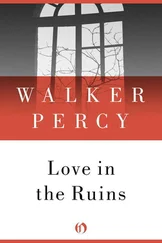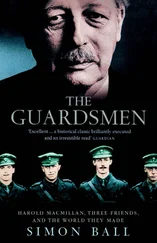Miraculously one of the tree peonies did survive it all, though only just. It had been kept in the ship’s stern gallery. As soon as possible, it was taken to Kew, becoming the first ‘Moutan’ in the King’s Garden.[67] Duncan had tried to get this plant to Banks for some time and at last it was accomplished.
During the trading season of 1794/95, Duncan had no live plants to send but instead, and in the way of compensation, he managed to lay his hands on what he described as ‘the most beautiful piece of workmanship I have ever sent home’. It was a present for Lady Banks – ‘an elegant Ivory Fan, with a Moutan painted in the centre, and a red and white water Lily, on the sides’.[68]
Captain Andrew Patton of the East India Company ship, Ocean , was entrusted with this singularly valuable cargo and it arrived back in London in late July 1795. In what could be one of the last letters that Banks wrote to Duncan, on 29 May 1796, Lady Banks insisted that her thanks to Duncan should take precedence over everything else. As Banks wrote, it was ‘the most beautifull Fan she has ever seen probably the most beautifull one that ever reached England at least it has been hitherto unrivalled wherever Lady Banks has exhibited it & that I can assure you was in as many places as she has visited’.[69]
In what reads like a farewell letter, Banks also assured Duncan of his great service to Kew – ‘we have since you have favored us with your assistance gaind many very elegant additions to the collection’. The ‘Moutan’, Banks wrote, was doing well. ‘We have I hope possessed ourselves of the proper mode of cultivating the Moutan … [it] has been kept cool all the winter & has this spring pushd out a head of leaves full two feet in diameter … the whole appearance of the Plant is far more healthy than it was when received.’[70] Knowing all about the problems of transporting plants by sea, Banks promised Duncan that in time for the next trading season he would send him a Kew-trained gardener to return with the plants he had collected. Banks commented that Main was over-confident and ‘took very few instructions’. The gardeners at Kew, on the other hand, were beginning to understand how to care for plants aboard ship.[71]
The Kew gardener never went to Canton. At the end of October 1796, Duncan may have performed his final botanical act when he collected plants, both economic and ornamental, for the East India Company’s botanic garden in Calcutta. He had still not learned the Linnaean system but he had learned about observing plants. His description of the plants he was sending was full and detailed.[72] Soon after, Duncan wound up his business affairs and left Canton, never to return.[73] In 1799 he bought a property near Arbroath, Scotland, but before that his services to botany were recognised when he was made a Fellow of the Royal Society on 19 April 1798.[74]
With Duncan’s departure, Banks was left without anyone to collect Chinese plants for him. A few years later, however, he did find someone who knew botany to go to Canton; and by that time, he had also devised an ingenious solution to the problem of moving living plants across vast ocean distances.
5
1786: The Madras Naturalists and Dreams of Oaxaca
In May 1787, Banks received a letter from India that amazed and excited him. It was from James Anderson, Physician General to the East India Company’s establishment in Madras. It told of a remarkable discovery he had made, which could substantially impact Britain’s trade with the rest of the world.
This is the first surviving letter from Anderson to Banks, but it is unlikely it was the first he sent, as it is entirely lacking the rather formal protocols used in introductory letters at that time. It is likely that someone else in Madras had previously introduced them.
Banks was already acquainted with most of the important European naturalists based on India’s Coromandel Coast, many of whom were sending him plant specimens. There was a flourishing natural-history network in the area, but the most likely candidate for making the connection was Johan Gerhard Koenig, who had become very close to Banks.
Koenig was born in what is now Latvia to German parents and trained as an apothecary in Riga. In 1748, at the age of twenty, he went to Denmark where he worked in several provincial pharmacies.[1] Though he learned something about plants during the time he studied materia medica in Riga, his serious education in botany began when he attended university in Uppsala during the years 1757–9, where he became a student of the already famous Carl Linnaeus. It was here that Koenig met and befriended Daniel Solander who had himself come under the spell of Linnaeus shortly after he had enrolled as a student in the university in Uppsala in 1750.[2]
In 1759, Koenig returned to Copenhagen where he took up an appointment as a hospital pharmacist.[3] Soon his career blossomed: he went on two botanical expeditions, the one to Iceland in 1764 being especially important; and he also obtained a medical degree.[4] No sooner had he earned his medical credentials in 1767, than Koenig’s life took another and dramatic turn when he was appointed to be the next doctor and botanical collector for the Lutheran Danish-Halle mission station based in Tranquebar, on the Coromandel Coast, nearly 300 kilometres south of Madras, where he arrived in early July 1768. The Danish East India Company was established there in 1620 and continued, though now trading under the name of the Asiatic Company, to use the town as its base. The missionaries, mostly Germans from Halle an der Saale, first arrived in Tranquebar in 1706, under the patronage of Frederick IV, the King of Denmark and Norway.[5]
Though the Tranquebar mission valued natural history very highly, Koenig didn’t get along with the missionaries: he found them too controlling and restrictive – for example, he was not allowed to send specimens anywhere other than Copenhagen.[6] Also, his salary was too low for him to travel much beyond Tranquebar and this obviously affected the range and quality of his botanical collections.
It seemed he was trapped but in 1774, and probably through the intervention of the Linnaean-minded community of naturalists in Copenhagen, he was able to leave Tranquebar and travel to Madras, the headquarters of the British East India Company on this stretch of the southeastern coast.
Madras was the Company’s second trading post in India and in 1640, with the building of Fort St George, it became an increasingly powerful commercial and political force in the region.[7] When Koenig arrived there he found that there were several British residents and visitors interested in natural history, among them Lady Anne Monson, who knew Solander and who we’ve already heard of when she met another one of Linnaeus’s students, Carl Peter Thunberg, at the Cape on her way to India.[8] At that time, Koenig could not have chosen a better place to pursue his interests in Indian botany.
One of the first things Koenig did, once free of the restrictions of the mission station, was to write a letter to Solander in which he included a sample of seeds he had collected between Tranquebar and Madras. Koenig had previously written to Solander without any botanical enclosures. Now he promised Solander that he could expect ‘beautiful and better examples’ in the future.[9]
In 1774, Solander, after returning from the voyage to Iceland with Banks, resumed his duties as the ‘Keeper of Natural and Artificial Productions’ at the British Museum. He was also busily working with Banks cataloguing the Endeavour ’s natural-history collection and looking after his herbarium.[10] Koenig’s seeds would find their home in this collection.
In this same letter in which he promised seeds, Koenig made it known that he wanted help from Solander and Banks in getting him an appointment with the East India Company and, in return, he offered his services to the two men – ‘the approval of the Professor and Mr. Banks is desired and for this I offer my most beseeching prayers, and to gain this will be my chief effort.’[11]
Читать дальше












